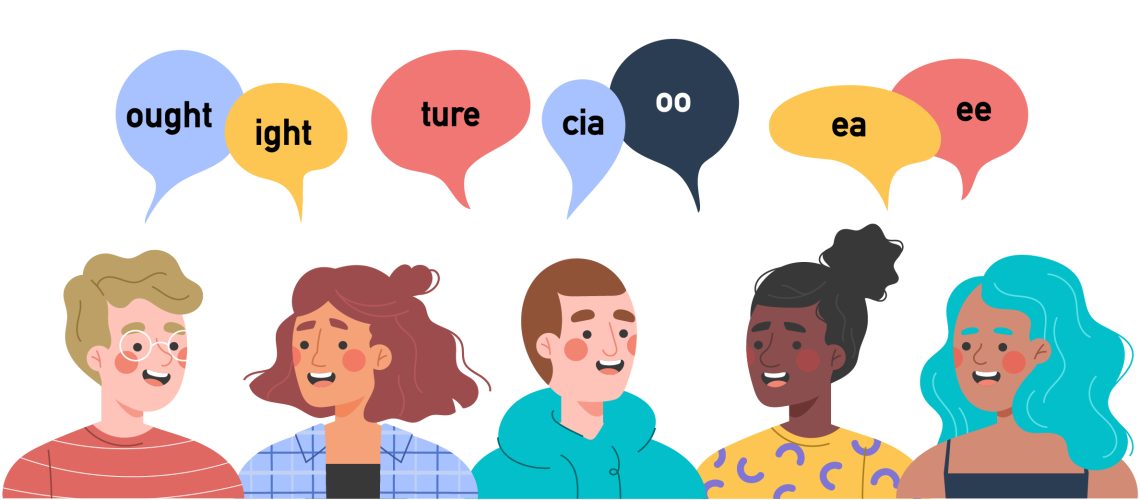
The Importance of Language Patterns
Learning a
new language involves understanding and applying the
correct word order, essential for effective communication. It is a
fundamental concept
which provides structure and clarity to our
communication. Languages have specific rules and patterns that dictate how
words should be arranged in a sentence, and learning and following these
patterns is crucial for understanding and being understood.
Language learners need
to follow the patterns and structure of sentences. This
involves grasping concepts like subject-verb agreement, tense, word order in
different types of sentences, getting, following and implementing.
In this
process, they reproduce
language by following and practicing the word order
to convey their thoughts effectively. Through repeated language reproduction,
learners can improve their fluency and accuracy in the target language.
This process is fundamental in language
learning and communication.
Language disorder, on the other hand,
typically refers to conditions where individuals have difficulty with grasping and keeping order. They have
difficulties reproducing the language and putting the lexical items in a
sentence’s proper position and order. They have challenges keeping the rules,
like walking between the lines and not on them. More creative people often have
difficulty maintaining patterns and staying within the lines. They prefer to be
independent thinkers and creative and, in a way, refuse to follow someone
else’s rules. So here we start a particular fight: who is stronger? The teacher
or the student? The language or the student’s brain? It is as if the student
needs to give in, follow the language structure, and give up on his creativity
or independent thinking. A negotiation is taking place to overcome the
student’s resistance to following the language rules. This often happens when
people find it hard to accept rules unless they really understand their
importance.
So, the
teacher needs to be extremely patient. S/he
should explain to the student how important it is to follow the language
patterns and rules… s/he needs to gently defuse the resistance and clarify that
learning new rules and following them is not a battlefield.
In
addition, specially dedicated methods are engaged. They will train the brain to
keep within the patterns. To follow them and keep them. The brain needs to be
differently trained to bring order to endorse their language skills.
Learning a
new language is a complex process that involves understanding and applying the
correct word order. Proper word order is essential for effective communication,
providing structure and clarity to our conversations. Every language has
specific rules and patterns that dictate how words should be arranged in a
sentence. Learning and following these patterns is crucial for understanding
and being understood.
Language
learners need to follow the patterns and structure of sentences, which involves
grasping concepts such as subject-verb agreement, tense, and word order in
different types of sentences. Learners engage in language reproduction by
following and practicing the word order to convey their thoughts effectively.
Through repeated language reproduction, learners can improve their fluency and
accuracy in the target language. This process is fundamental in language
learning and communication.
On the
other hand, language disorder typically refers to conditions where individuals
have difficulty grasping and keeping order. They have difficulties reproducing
the language and putting the lexical items in the correct position and order in
a sentence. They have challenges keeping the rules, like walking between the
lines and not on them. More creative people often have difficulty keeping
patterns and staying within the lines. They prefer to be independent thinkers
and creative and, in a way, refuse to follow someone else’s rules.
Therefore, an
inevitable fight can arise between the teacher and the student or the language
and the student’s brain. The student must give in and follow the language
structure, which can conflict with their creativity or independent thinking. It
is like a negotiation to overcome the student’s resistance to following the
language rules. This often happens with people who find it hard to accept rules
unless they really understand their importance. The teacher needs to be extraordinarily
patient and explain to the student the importance of following the language
patterns and rules. The teacher must gently defuse the resistance and clarify
that learning and following new rules is not a battlefield.
In
addition, specially dedicated methods are employed to train the brain to stay
within the patterns and follow them. The brain must be trained differently to
bring order and endorse language skills.
כולל בריכה -עד 15:00
מה-3.7.22
-
לכל הגילאים
-
ארוחת צהרים וספר ראשון
-
4-6 ילדים בממוצע בקבוצה
-
08:30 - 15:00
כולל בריכה -עד 15:00
מה-3.7.22
-
לכל הגילאים
-
ארוחת צהרים וספר ראשון
-
4-6 ילדים בממוצע בקבוצה
-
08:30 - 15:00
כולל בריכה -עד 15:00
מה-3.7.22
-
לכל הגילאים
-
ארוחת צהרים וספר ראשון
-
4-6 ילדים בממוצע בקבוצה
-
08:30 - 15:00
כולל בריכה -עד 15:00
מה-3.7.22
-
לכל הגילאים
-
ארוחת צהרים וספר ראשון
-
4-6 ילדים בממוצע בקבוצה
-
08:30 - 15:00
כולל בריכה -עד 15:00
מה-3.7.22
-
לכל הגילאים
-
ארוחת צהרים וספר ראשון
-
4-6 ילדים בממוצע בקבוצה
-
08:30 - 15:00
